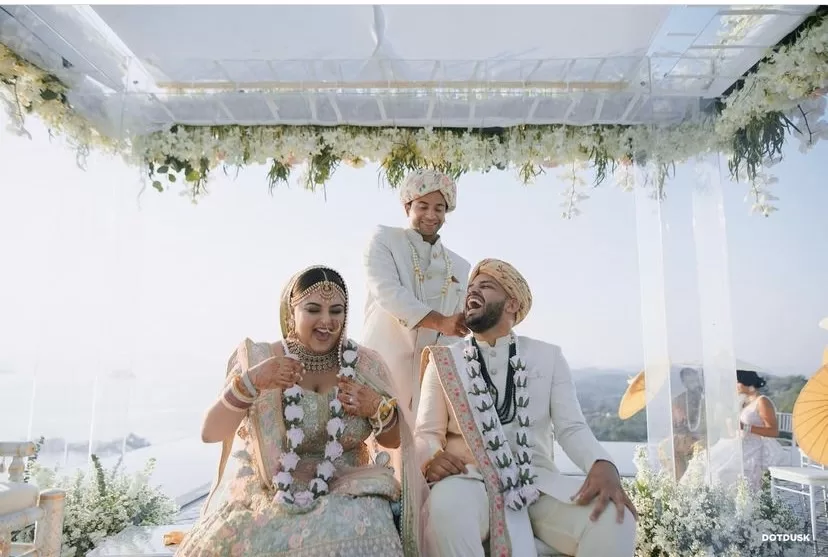Indian weddings are renowned for their vibrant culturally rich ceremonies that bring together families and communities in joyous celebration. From the pre-wedding rituals to the main wedding ceremony, each event holds its own significance and charm. In this article, we will explore the different types of Indian wedding ceremonies, providing a glimpse into the beautiful traditions and customs that make these celebrations so unique and memorable
- Roka Ceremony, the Roka ceremony is a pre-engagement ritual that marks the formal announcement of the couple’s intent to marry. It takes place in the presence of close family members and involves the exchange of gifts, blessings, and acceptance of the alliance. The ceremony signifies the beginning of the wedding journey and sets the stage for future festivities
- Mehendi Ceremony, the Mehendi ceremony is a joyous occasion that takes place a day or two before the wedding. The bride’s hands and feet are intricately adorned with henna designs by skilled artists. This ceremony typically involves singing, dancing, and celebrating with family and friends. Mehendi symbolizes the auspiciousness of marriage and is believed to bring luck and blessings to the couple’s union
- Sangeet Ceremony, the Sangeet ceremony is a night of music, dance, and revelry. It is an event filled with fun and entertainment, usually held a day or two before the wedding. Family members and friends perform traditional dances and songs, celebrating the upcoming union in a lively and enthusiastic manner. The Sangeet ceremony fosters a sense of togetherness and joy among the families before the wedding day
- Haldi Ceremony, the Haldi ceremony is a pre-wedding ritual that involves applying a paste made from turmeric, rosewater, and other aromatic ingredients on the bride and groom. The yellow paste is believed to cleanse and purity the couple before their nuptials. Family members and friends participate in this joyful ceremony, applying the paste on the couple’s face, arms, and legs amidst singing and laughter
- Baraat and Milni, the Baraat is a grand procession of the groom’s family and friends, accompanied by music and dancing. The groom arrives on a beautiful decorated horse or vehicle, symbolizing the joy and excitement of his wedding. The Milni is a ceremonial meeting of both families at the entrance of the wedding venue, as they exchange garlands and blessings, signifying the union of two families
- Wedding Ceremony, the main wedding ceremony, known as the Vivaah or Vivah, is the culmination of all the preceding rituals. It takes place under a sacred canopy, called the mandap, where the couple exchange their vows and performs sacred rituals such as the Saptapadi, where the couple takes seven steps together, symbolizing their shared goals and responsibilities. The ceremony is conducted by a priest, and family members and close friends bear witness to the sacred union
Indian wedding ceremonies are a beautiful tapestry of traditions, customs, and deep-rooted cultural significance. From the Roka ceremony to the grand wedding ceremony, each event holds its own unique charm and significance. These ceremonies not only celebrant the union of two individuals in matrimony but also bring families and communities together in a joyous and memorable celebration of love and togetherness. Contact our wedding planner team – Stylish Events Phuket today to start planning your special day



